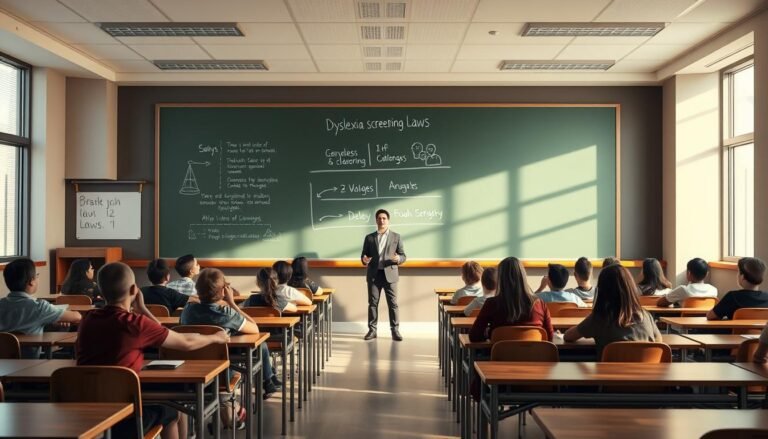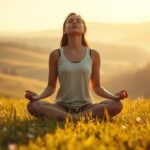Equipping the Next Generation: How Schools Can Support Career Readiness for All Learners
Introduction
In an ever-evolving job market, the importance of career readiness has never been more critical. As technology rapidly advances, the skills required for successful careers are changing at an unprecedented pace. In this landscape, schools hold a powerful key to the future, tasked with preparing students not just for college, but for the dynamic world of work. Equipping the Next Generation: How Schools Can Support Career Readiness for All Learners is not merely a wishful thinking; it’s a necessity. Schools have an opportunity to create pathways for all learners—regardless of their background or aspirations—to thrive in their future careers. This article will delve deep into actionable strategies, illustrative case studies, and essential insights for educators aiming to foster a generation that is both career-ready and resilient.
The Need for Career Readiness
Understanding Career Readiness
Career readiness entails a blend of skills, knowledge, and abilities vital for success in various career paths. According to the National Association of Colleges and Employers (NACE), these competencies include critical thinking, communication, teamwork, and professionalism. However, students often leave high school lacking real-world experiences that can bridge the gap between education and employment.
Why It Matters
In 2020, a report from the World Economic Forum highlighted that over 50% of employees will need reskilling by 2025. With automation and technology driving substantial changes in the workforce, schools must step up to ensure students are not just job seekers, but job creators.
The Role of Schools
Schools are uniquely positioned to address this gap. They can provide structured environments for students to explore various careers, develop skills, and gain exposure to real-world experiences through internships, partnerships, and curriculum integration.
Building a Framework for Career Readiness
Curriculum Integration
One effective method for equipping the next generation is through integrated curricula that blend academic learning with career exploration. This approach ensures that students can see the relevance of their studies to real-life situations.
Case Study: Project-Based Learning in Action
River Valley High School implemented a project-based learning initiative that allowed students to work on real community problems, partnering with local businesses for solutions. This not only strengthened students’ problem-solving and teamwork skills but also provided direct insight into various career fields.
Analysis: This initiative exemplifies how integrated learning experiences can foster essential skills while motivating students through real-world relevance.
Industry Partnerships
Forming partnerships with local businesses and organizations can provide invaluable resources to schools. These partnerships can facilitate job shadowing opportunities, internships, or even visiting professionals who can provide mentorship.
Case Study: The Career Exploration Program in Chicago Public Schools
In Chicago, an initiative called the Career Exploration Program partners with local companies to give students internships tailored to their interests. By collaborating with sectors like healthcare and technology, students gain hands-on experience that enhances their employability.
Analysis: By leveraging community resources, schools can enrich career readiness initiatives, effectively aligning student learning experiences with local workforce needs.
Soft Skills Development
While technical skills are vital, soft skills often make the difference in career success. Educators must prioritize developing skills such as emotional intelligence, adaptability, and communication within their teaching methods.
Case Study: The Soft Skills Training Project in California
In response to feedback from local businesses, schools in California introduced a soft skills training program. This initiative incorporates role-playing, group discussions, and teamwork activities to help students master communication and collaboration in various contexts.
Analysis: By focusing on soft skills, schools can better prepare students for the realities of the workplace, making them more competitive in the job market.
Using Technology to Enhance Career Readiness
Digital Learning Platforms
Incorporating technology into career-readiness programs can exponentially increase students’ access to resources and learning opportunities. Digital learning platforms can provide career-specific courses, virtual internships, and exposure to industry standards.
Case Study: Virtual Reality Career Explorations
Tech High School introduced virtual reality (VR) modules that allow students to virtually "visit" different workplaces. By using VR technology, students can experience various careers first-hand, including fields like engineering, healthcare, and arts.
Analysis: This innovative approach not only captivates students but also provides exposure to careers they might not have considered, illustrating the powerful role of technology in career exploration.
Online Portfolios
Encouraging students to create online portfolios can aid in showcasing their skills and experiences effectively. Platforms like LinkedIn or personal websites can serve as a springboard for networking and job applications.
Case Study: Portfolio Building Workshop at Greenfield High
In a workshop series, Greenfield High taught students how to create and curate online portfolios. The process included selecting projects, writing descriptions, and learning to market themselves online.
Analysis: Tools like online portfolios empower students to take ownership of their career paths and display their unique qualifications to potential employers.
Engaging Families and Communities
Family Involvement
Engaging families in the career readiness conversation can foster supportive home environments that encourage ambition. Schools can organize workshops to educate families on emerging job trends and the evolving skill set required.
Case Study: Family Career Nights at Riverbank School
Riverbank School hosts annual career nights that invite families to engage with local professionals. These events provide information about local job markets and labor trends, fostering a community-wide focus on career readiness.
Analysis: By involving families, schools create a supportive network that amplifies students’ aspirations and reinforces the importance of education.
Community Resource Utilization
Utilizing local resources—such as libraries, community centers, and vocational training programs—can enhance career readiness initiatives. Schools should connect students with these resources to explore diverse pathways.
Case Study: The Local Business Network in Des Moines
A collaborative network of businesses and schools in Des Moines has created shared resources for students. This includes access to mentorship programs and after-school workshops led by local professionals.
Analysis: By tapping into community networks, schools can expand career readiness offerings and help students discover diverse career options.
Measuring Success
Evaluation Metrics
To gauge effectiveness, schools must establish evaluation metrics for their career readiness programs. Student feedback, employment rates post-graduation, and partnerships formed are vital indicators of success.
Continuous Improvement
Feedback loops from students, parents, and local businesses can help tailor programs to meet evolving job market demands. Schools should embrace a mindset of continuous improvement, regularly updating their offerings based on stakeholder input and emerging trends.
Conclusion
Equipping the Next Generation: How Schools Can Support Career Readiness for All Learners is a multifaceted endeavor requiring collaboration, innovation, and dedication. Schools play an integral role in developing a pipeline of skilled, adaptable, and resilient learners ready to face tomorrow’s workforce challenges. By integrating real-world experiences into the curriculum, forming strategic partnerships, and fostering lifelong learning, we can empower students to not just meet the challenges of the future, but to thrive in them.
As educators, community members, and policymakers engage in this vital work, remember that the investment in our youth today will yield transformative returns tomorrow. Together, we can shape the future one learner at a time.
FAQs
1. What is career readiness?
Career readiness refers to the set of skills, knowledge, and competencies that students need to be successful in their careers after graduation.
2. How can schools integrate career readiness into the curriculum?
Schools can incorporate career readiness by collaborating with local businesses, offering internships, and integrating real-world problem-solving projects into lessons.
3. Why are soft skills crucial for career success?
Soft skills such as communication, teamwork, and adaptability often differentiate candidates in the job market, significantly impacting hiring decisions.
4. How can technology enhance career readiness programs in schools?
Technology can provide access to online courses, virtual internships, and tools for building resumes and portfolios, thus broadening students’ learning experiences.
5. What role do families play in a student’s career readiness?
Families can support their children by engaging in career discussions, attending school events, and fostering an environment that encourages exploration and ambition.
This article serves to ignite passion and purpose in educators and communities, motivating actions that pave the way toward a future where every student is prepared to meet their career aspirations head-on. Now let’s take that next step together!
















